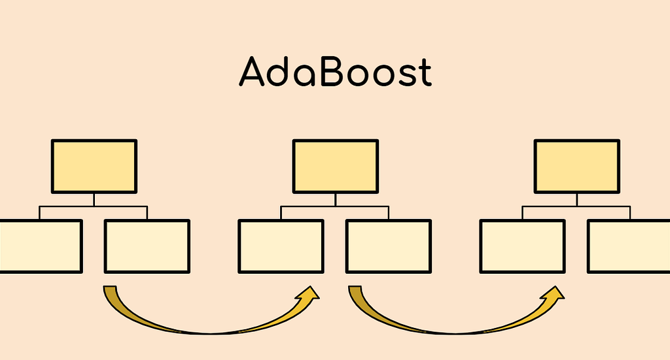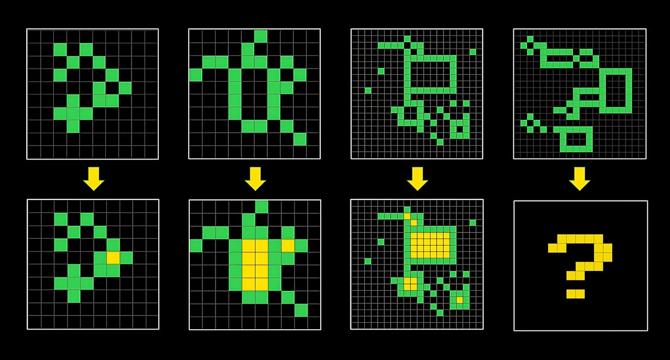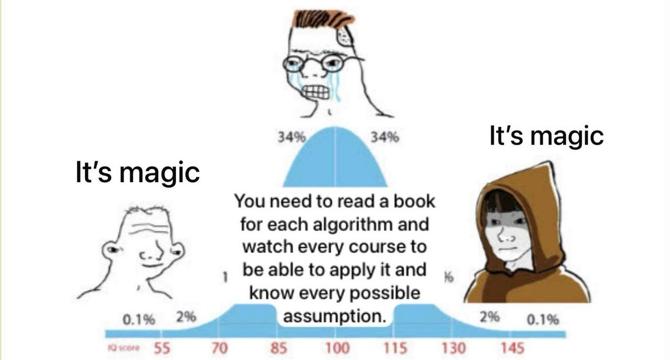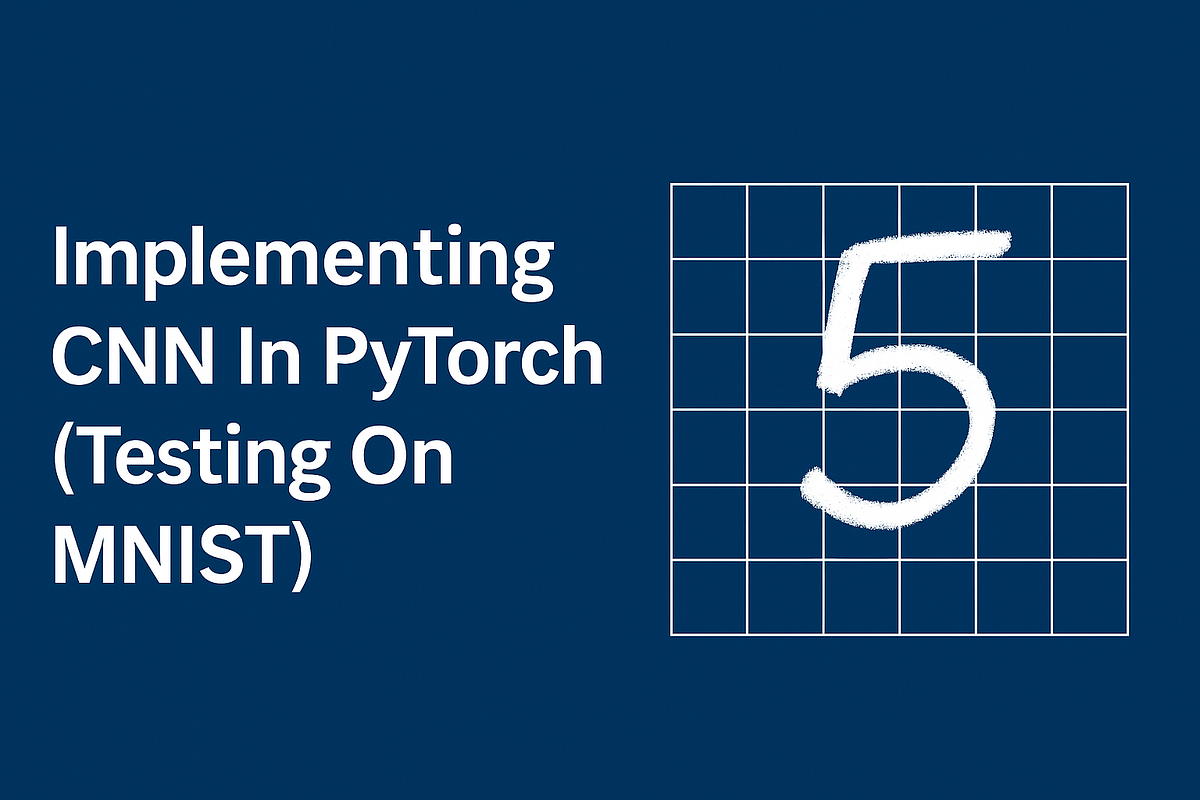Deep Learning News
Medium
301

Image Credit: Medium
AdaBoost Unraveled: The Secret to Smarter Predictions
- AdaBoost is an ensemble learning technique that combines multiple weak learners to create a strong classifier, improving machine learning model accuracy.
- The AdaBoost algorithm assigns weights to data points, with higher weights to incorrectly classified instances, and trains models to minimize errors.
- By leveraging AdaBoost, combining algorithms like decision trees, KNN, and linear regression can enhance predictive capabilities and increase accuracy.
- The algorithm assigns sample weights and calculates errors to prioritize misclassified data points in subsequent models.
- It updates weights based on classifier performance, adjusting weights for correctly and wrongly classified samples to improve predictive power.
- AdaBoost selects random numbers to emphasize misclassified records, updating sample weights iteratively to reduce errors and improve model accuracy.
- Implementing AdaBoost in Python can be done from scratch using NumPy or through libraries like Scikit-learn.
- Mastering AdaBoost involves understanding boosting, types of boosting, AdaBoost classifier, and the mathematical intuition behind the algorithm.
- AdaBoost, or Adaptive Boosting, significantly enhances weak classifiers' performance by combining their predictions, improving accuracy.
- This article provides insights into AdaBoost algorithm, its application in machine learning, and the importance of ensemble methods for predictive modeling.
Read Full Article
18 Likes
Medium
308

Image Credit: Medium
Comprehensive Exploration of Cursor AI’s Cutting-Edge AI Applications and Tools
- Cursor AI is revolutionizing the coding world by integrating advanced AI capabilities into familiar environments like Visual Studio Code.
- Cursor AI offers features such as next-action prediction, natural language edits, and context-aware code assistance to enhance developer productivity.
- The tool seamlessly integrates with VS Code, making it easy to incorporate AI into existing workflows.
- Despite initial skepticism, Cursor AI proves to be a promising solution for streamlining coding tasks and improving accuracy.
Read Full Article
18 Likes
Medium
188

Image Credit: Medium
AI Ethics Journey: Confronting Bias & Championing Transparent AI
- Encountering AI bias was a wake-up call and a pivotal moment that made the author question the ethical implications of AI.
- AI ethics go beyond guidelines and serve as a moral compass, aiming to protect user privacy, avoid bias, and minimize environmental harm.
- AI bias was a personal challenge that highlighted the potential perpetuation of existing inequalities and the need for fairness measures.
- Addressing AI bias requires more than just correcting algorithms; it involves challenging societal issues and implementing fairness measures.
Read Full Article
11 Likes
Medium
59

Image Credit: Medium
How One App Helped Me Generate $300 a Day!
- A groundbreaking app promises to transform how creators generate voice content and potentially earn over $300 a day.
- The app utilizes patented technology called the Vocal Identity Matrix, ensuring generated voice clones sound like the user without any robotic undertones.
- Users can create engaging voiceovers for ads, podcasts, and audiobooks quickly and easily.
- The app offers the ability to produce relatable and engaging tones, resulting in increased engagement and potential boosts in sales.
Read Full Article
3 Likes
Medium
297

Image Credit: Medium
Immersive Experience Design Is the Soul of Modern Branding
- Immersive experience design is the art and science of creating spaces, products, and moments that invite presence and make people feel seen, held, and inspired.
- The vibe and emotional resonance of a brand is more valuable than the number of followers it has. Making people feel like they belong is key.
- Immersive design can turn a business into a transformational experience, moving beyond just offering products or services.
- Integrating AI intelligently into immersive design can enable personalization at scale and adapt the experience to individual needs, amplifying the human touch.
Read Full Article
17 Likes
Medium
201

Building a Modular Computer Vision Perception System: Part 3 — Depth Estimation
- Depth estimation provides crucial spatial information for robots to navigate and interact with objects in a room.
- It adds the missing dimension of depth to traditional 2D computer vision, creating a 3D understanding.
- Monocular depth estimation uses neural networks to infer depth from 2D images accurately.
- Depth estimation helps in autonomous driving, robotics, augmented reality, and scene understanding applications.
- Implementing depth estimation from a single 2D image is challenging due to the loss of explicit depth info.
- The MiDaS model by Intel Labs is a robust choice for relative depth estimation.
- Abstract base classes defining interfaces and concrete implementations are crucial for depth estimation.
- Depth estimators can enhance object detection and tracking by providing spatial information.
- Depth maps help transform 2D image coordinates into richer 3D positions for scene understanding.
- Visualizing depth maps with warmer colors for closer objects and cooler colors for farther objects aids in interpretation.
- Optimizations and configurations are necessary for efficient depth estimation in various deployment environments.
- Understanding the limitations of monocular depth estimation is crucial for precise applications.
- Temporal smoothing and other extensions can further improve the depth estimation module.
- Monocular depth estimation balances capability and simplicity but may require supplemental sensors for precise metrics.
- The next article will delve into image segmentation to enhance pixel-level object identification.
Read Full Article
12 Likes
Medium
27

Image Credit: Medium
Breakthrough AI Innovations Revolutionizing Organic Farming
- AI-powered pest control is revolutionizing organic farming by offering sustainable and effective methods to manage pests.
- The potential of AI in organic farming includes increased yields, reduced pesticide use, and enhanced sustainability.
- Implementing AI in organic farming involves using smart sensors, cameras, and machine learning algorithms to collect and analyze data on pest activity.
- The results of implementing AI in organic farming have been remarkable, with significant reductions in pest damage and improved crop protection.
Read Full Article
1 Like
Medium
347

Image Credit: Medium
Entropy based dense representation of ARC-AGI tasks
- The research introduces a new foundation utilizing entropy to enhance AI solutions, particularly for ARC-AGI tasks.
- ARC-AGI evaluates AI's ability to solve abstract problems, emphasizing abstraction, reasoning, and pattern recognition.
- The use of entropy in this context refers to Claude Shannon's definition, quantifying uncertainty in potential states.
- A denser representation for ARC-AGI tasks is built using information theory fundamentals and graph-oriented approaches.
- Connections between nodes in a graph are associated with entropy values based on connection distribution.
- Entropy calculation involves considering probable connections and normalizing values to highlight informative relationships.
- The approach aims to capture information-rich connections in the graph, emphasizing rare relationships and highlighting information-dense ones.
- Implementing information-based representations can aid in solving complex ARC tasks, leveraging entropy for richer graph structures.
- However, challenges may arise regarding the equitable representation of different types of connections based on entropy values.
- Optimizations like parallel computations and rule-based entropy calculations play a key role in characterizing representations in ARC tasks.
Read Full Article
20 Likes
Towards Data Science
117

The Basis of Cognitive Complexity: Teaching CNNs to See Connections
- The article discusses the capabilities of artificial intelligence models, particularly convolutional neural networks (CNNs), in capturing human learning aspects.
- It explores the similarities between CNNs and the human visual cortex, highlighting features like hierarchical processing, receptive fields, feature sharing, and spatial invariance.
- While CNNs excel in visual tasks, they face challenges in understanding causal relations and learning abstract concepts compared to humans.
- Studies show instances where AI models fail to generalize image classification or recognize objects in unusual poses.
- The article outlines the difficulty CNNs face in learning simple causal relationships, emphasizing the lack of inductive bias necessary for such learning.
- Meta-learning approaches like Model-Agnostic Meta-Learning (MAML) are proposed to enhance CNNs' abilities in abstraction and generalization.
- Experiments demonstrate that shallow CNNs can indeed learn complex relationships like same-different relations with meta-learning, improving performance significantly.
- Meta-learning encourages abstractive learning and optimal point identification across tasks, enhancing CNNs' reasoning and generalization capabilities.
- Overall, the study suggests that utilizing meta-learning can empower CNNs to develop higher cognitive functions, addressing the limitations in learning abstract relations.
- Efforts in creating new architectures and training paradigms hold promise in enhancing CNNs' relational reasoning abilities for improved AI generalization.
Read Full Article
5 Likes
Medium
260

Image Credit: Medium
Exploring GPT 4.5’s Groundbreaking Enhancements in AI Interaction
- GPT-4.5 introduces groundbreaking enhancements in AI interaction.
- GPT-4.5 blends emotional intelligence with precision to redefine conversational experiences.
- GPT-4.5 focuses on conversational flow and emotional intelligence, taking a step further from GPT-4o.
- The challenge lies in bridging the gap between AI-driven interactions and genuine human emotion.
Read Full Article
15 Likes
Medium
7

Image Credit: Medium
Unlocking the Secrets of Artificial Intelligence in Cybersecurity
- AI transforms cybersecurity by predicting, detecting, and neutralizing cyber threats with precision.
- AI-powered tools leverage machine learning to detect anomalies, analyze behavior, and monitor networks in real-time.
- Cyber threats are evolving faster than ever, demanding innovative solutions beyond traditional security measures.
- AI tools like Microsoft Security Copilot and Darktrace analyze vast datasets, recognize patterns, and respond to threats with unprecedented speed and accuracy.
Read Full Article
Like
Medium
151

Image Credit: Medium
Turtle Hiccup With Math and Python
- Turtle Hiccup is a philosophical and mathematical exploration of infinity, recursion, and interconnectedness, inspired by Zeno's paradoxes and quantum entanglement.
- It introduces the concept of a 'hiccup moment' where infinite processes converge into a unified state, symbolized by an old man on a scooter chasing a turtle.
- The chase represents Zeno's paradox, showcasing the resolution of infinite recursion into convergence at a singular point.
- Hiccup moments reflect universal processes like causality beyond time, entangled systems, and personal epiphanies through recursive feedback loops.
- Theoretical frameworks like Zeno's Infinite Steps and quantum entanglement illustrate how infinite efforts can lead to finite results and unity through collapse.
- Fractals and recursive feedback mirror the process, with cognitive growth reaching pattern-dissolving breakthroughs.
- Applications include viewing consciousness as recursive collapse, drawing parallels to quantum physics and cosmology, and utilizing storytelling and symbolism for metaphysical exploration.
- The Turtle Hiccup teaches that infinite steps can converge, feedback drives transformation, and truth is woven through loops, emphasizing the point of fusion as the hiccup.
- The article provides a Python script to simulate the Turtle Hiccup concept, visualizing the chase and theoretical convergence point through a console-based simulation and graphical plot.
- By running the provided script, users can observe the shrinking gap in the chase, understand theoretical convergence, and experience the philosophical implications of the Turtle Hiccup concept.
Read Full Article
9 Likes
Medium
389

Image Credit: Medium
My Journey from the Left to the Right
- The author shares their journey of transitioning from the left to the right.
- They initially started by consuming a lot of content, but realized the need to take action.
- They experimented with different models and techniques, such as BIDIRECTIONAL LSTMs and BERT.
- After trying various approaches and methods, their Kaggle score improved and the model now detects all labels.
Read Full Article
23 Likes
Medium
105

Image Credit: Medium
GPT-4o: In a league of Its own for *accurate* long-context performance
- OpenAI's GPT-4o outperforms other models in understanding long-range context.
- The NoLiMa benchmark demonstrates GPT-4o's superior performance in reasoning, relevance chains, and semantic matching.
- GPT-4o achieves impressive NoLiMa scores compared to contemporaries at different context lengths.
- As the memory length increases, GPT-4o remains stable while competitors' performance declines.
Read Full Article
6 Likes
Medium
54

Image Credit: Medium
Implementing CNN In PyTorch (Testing On MNIST — 99.26% Test Accuracy)
- Importing necessary Python libraries like numpy, torch, and torchvision for implementing CNN on the MNIST dataset in PyTorch.
- Using PyTorch's MNIST class to load training and test images efficiently, with automatic downloading and organization.
- Understanding the tuple structure of data samples in PyTorch's MNIST dataset and the importance of image to tensor transformation.
- Visualizing random samples from the training set to gain insights into the handwriting styles and variation in digits.
- Preprocessing images by transforming them into tensors, essential for neural network processing.
- Creating a validation split and restructuring data for efficient training using PyTorch functions.
- Building a CNN architecture using PyTorch's Sequential container, stacking layers like convolution, batch normalization, and activation functions.
- Verifying the model architecture and setting up device-agnostic code to enable GPU acceleration if available.
- Selecting loss function, optimizer, and performance metrics, optimizing data handling for efficient training.
- Training the model with key phases like forward pass, backward pass, and validation, tracking metrics, and achieving near-perfect accuracy.
Read Full Article
3 Likes
For uninterrupted reading, download the app